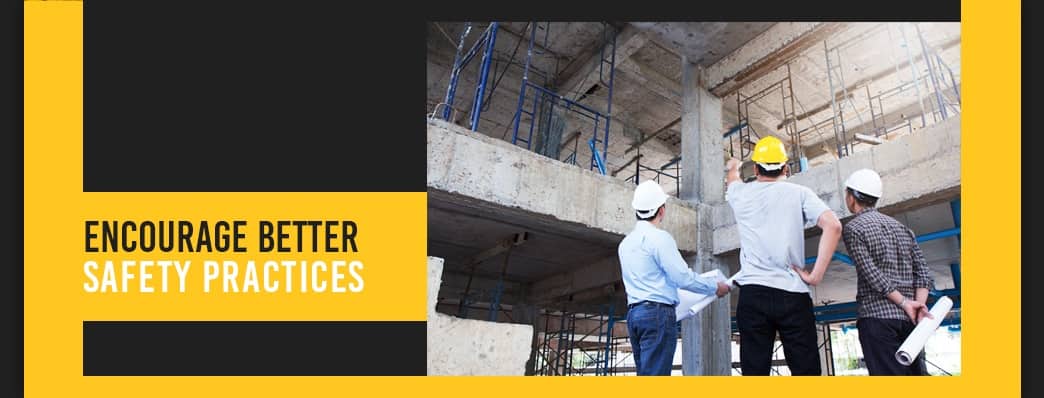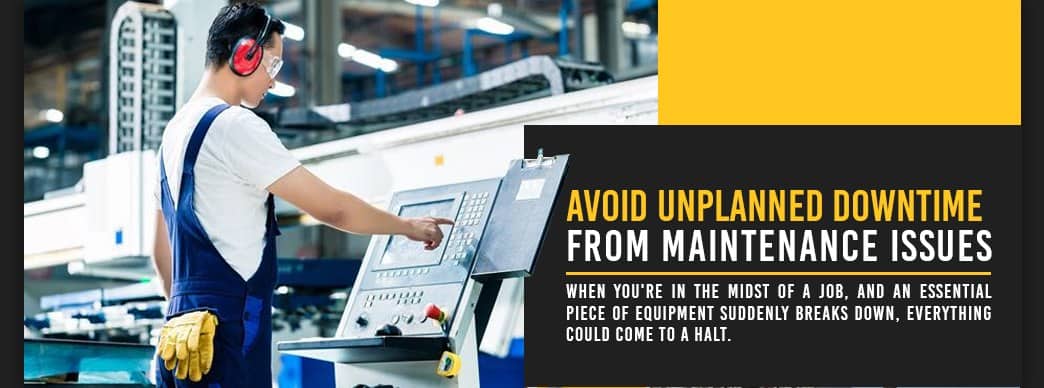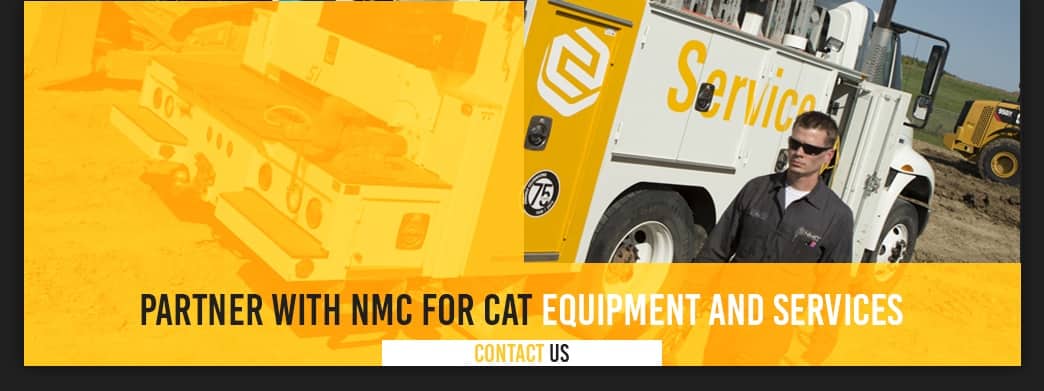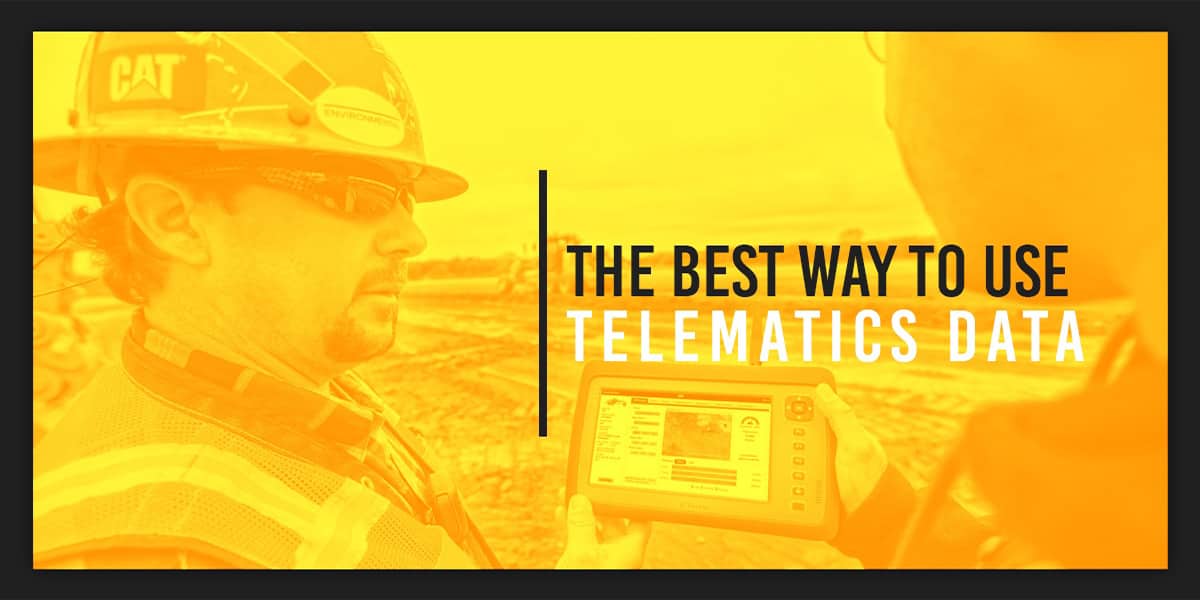
The Best Way to Use Telematics Data
Category: Equipment and Solutions
Telematics combines the technology of telecommunications and informatics to deliver information updates to remote networks. For about two decades now, telematics has been opening up new possibilities for fleet management. In the early days, it was mostly trucking companies who took advantage of this technology, and tracking rates were quite limited at only about one or two updates per hour.
Over the last several years, the continued advancement of the Internet of Things (IoT) has paved the way for telematics to become more user-friendly and gather far more data than ever before. Today, telematics is revolutionizing how construction companies manage their fleets of on- and off-road vehicles.
Even as other types of technologies are made available, telematics still has the highest probability of any solution currently available to lead to more productivity, efficiency and overall ROI on your jobsites.
The Challenge With Telematics
Though telematics has become more accessible and user-friendly in many ways, one of the big challenges of telematics today is that the sheer volume of data that is gathered can be overwhelming. The term Big Data is feeling bigger all the time. This may seem like a good problem to have, but it’s a problem for fleet managers nonetheless. Telematics is only useful if you know which data sets to pay attention to and how to implement positive changes based on the data you collect.
Let’s take some time to look at the ways fleet managers can effectively use telematics to improve their operations. The best data sets to pay attention to depends on how you want to improve your current operations. Do you need to encourage better safety practices? Improve fuel efficiency? Maybe you need to schedule and scale more accurately or avoid unplanned downtime from maintenance issues. Perhaps you’re looking to improve security or maximize profits. Maybe the answer is yes, all of the above. We’ll look at each of these goals and how telematics, as part of a total fleet management solution, can help you achieve it.
Encourage Better Safety Practices
Harsh braking, sudden accelerating, speeding, failing to wear a seatbelt and other unsafe practices can compromise the safety of your workers and can sometimes take an undue toll on your heavy equipment. The seat belt issue, in particular, can also put your company at risk since it is a citable offense according to OSHA standards. The requirement for seatbelts isn’t limited to on-road vehicles — it also includes heavy machinery such as scrapers, tractors, loaders and bulldozers.
You should already have training in place to make sure all your workers understand safe driving and operating practices. Once the training ends, though, how can you enforce your company’s safety standards? Telematics can give you live data on how both on- and off-road vehicles are being operated so you can be alerted to things like harsh braking and any of the other unsafe practices mentioned above.
By overlaying data concerning safety practices with data on who is operating a vehicle at a given time, you can directly address issues with drivers who need to be reminded of proper safety procedures.
It should also be noted that you can keep workers safer by keeping your equipment in good shape through proactive maintenance. As we’ll see, telematics can help you more accurately predict when equipment needs to be serviced, before an unexpected and potentially dangerous breakdown occurs.
Improve Fuel Efficiency
Both on- and off-road equipment is useless without fuel. In some cases, fuel costs can account for more than half of a fleet’s operating budget. It’s no wonder that construction companies are interested in finding ways to reduce their fuel costs. Telematics has been proven to be an effective means of improving fuel efficiency, meaning the same levels of productivity are met using a fraction of the fuel that was used before.
How is this possible? One of the biggest ways is that telematics can detect idle time and working time. When workers know that idle time is being flagged, it creates a much higher level of accountability and encourages them to turn off their engines when sitting still. Idle time in between tasks may seem insignificant, but experienced fleet managers and industry experts understand just how expensive and wasteful idle time can be. According to Cat®, some industry experts say idle time can account for as much as half of total running time.
The financial cost of this depends on the current price of fuel and machinery’s total runtime. Fortunately, the price of fuel has been coming down recently, but even at the current price of nearly $3 per gallon for diesel fuel, over the course of a year of 2,000 operating hours at a conservative rate of 35 percent idle time, a vehicle would waste over $2,000 and introduce unnecessary fuel emissions into the environment.
You can also improve fuel efficiency by preventing fuel theft, an unfortunate issue that is all too common. The added accountability and security that telematics provides can cut down on and even eliminate the problem of fuel theft.
Schedule and Scale More Accurately
Telematics isn’t just about monitoring what’s happening right now. It can also help you plan more accurately for the future. This is good news to fleet managers who are faced with the difficult task of scheduling. By seeing how each piece of equipment is being used on a jobsite — which are in high demand and which are working under capacity — you can make more informed equipment assignment decisions for future jobs.
Scaling is about either downsizing or expanding your fleet to match the size of your business. Typically, when companies talk about scaling, they’re expanding their reach and the number of jobs they can take on. To do this effectively, you need to know whether you need to purchase or rent new equipment and, if so, what types of equipment.
The same data you use for scheduling can help tremendously with successful scaling. You may determine that you don’t need to purchase a new dump truck, but you’ll need two new backhoes. Or, you may find something completely different. If you’re not trying to expand the scope of your business and simply want to maximize your current efficiency, you may find that you never need your backhoe and trencher at the same time. In a case like this, which is just one example, you could save money by downsizing to a single skid steer with two separate attachments.
The best way to maximize efficiency in your scheduling and in scaling your business depends on the type of work you do and what you learn from your data on equipment usage. One thing is sure — by letting the data speak to you, you can make more informed decisions rather than working off of hunches or intuition.
Avoid Unplanned Downtime From Maintenance Issues
When you’re in the midst of a job, and an essential piece of equipment suddenly breaks down, everything could come to a halt. Unplanned downtime like this comes with several unfortunate consequences. Now, your schedule is thrown off, your client may be upset, and you have to pay to repair or replace whatever broken part or issue caused the breakdown.
This sort of scenario is the reason many fleet managers attempt to implement proactive maintenance strategies such as preventive or predictive maintenance. Proactive maintenance operates under the notion that an ounce of prevention is worth a pound of cure. In other words, by preventing breakdowns, you can save money and maximize uptime. You can also extend the life of your equipment.
Preventive maintenance involves routine service schedules based on common issues particular pieces of equipment run into. Predictive maintenance involves closely monitoring the performance of equipment to detect early on if a problem is starting. Proactive maintenance, including hyper-accurate predictive maintenance, is possible with the use of telematics. When telematics software is gathering a continuous stream of data on how a piece of machinery is performing, you can begin to see patterns emerge to help you schedule more accurate preventive maintenance, and you can see when issues come up that call for predictive maintenance right away.
Cat’s telematics program, called Product Link™, even streamlines the process of scheduling maintenance and ordering parts by including a dealer support section right there in the software program.
Improve Security
Your heavy equipment and on-road vehicles are some of your company’s most important assets. Unlike money, however, these assets can’t be locked up in a safe. They’re out in the world getting work done and can sometimes be vulnerable to theft. If you’ve never experienced any of your equipment being stolen, you may not realize what a common and expensive problem this is.
Estimates of the cost of equipment theft annually range anywhere from around $300 million to $1 billion. What’s more, very few pieces of stolen machinery are ever recovered. Law enforcement tracks down as little as 20 percent of stolen equipment. Clearly, the best way to avoid losses from theft is to prevent it from ever taking place by increasing the security of your equipment.
GPS fleet management has always been an essential part of telematics. It allows fleet managers to keep tabs on where every single asset is located at all times. This means, at any point throughout the day, you should be able to confirm that equipment is where it’s supposed to be.
Telematics software such as Product Link can also allow you to set up boundaries around jobsites. It’s as easy as drawing on a map. If any machinery crosses over a site boundary, you’ll get a security alert letting you know. Telematics can help you immediately detect unauthorized use of equipment and can help you recover stolen property right away.
Maximize Profits
When your workers are staying safe, your company is wasting less fuel, your scheduling and scaling are maximized for efficiency, your maintenance is preventing expensive breakdowns and extending the life of your equipment, and your security measures are keeping your assets safe, what is the cumulative result? Put simply, your business will be more successful than it was before. Success can involve many things. One huge factor is customer satisfaction, but it can also be measured in your business’s profitability.
Your bottom line isn’t the end-all-be-all, but it’s perhaps the most obvious measure of your business’s success. The great thing about effective fleet management is that, as you save money, you’re also bound to satisfy your customers. After all, telematics can help you schedule more accurately to complete jobs on time.
There’s no question that your company, like any other company, wants to maximize profits while satisfying your customers. That’s what successful business is all about. Telematics can help you achieve that.
Paying Attention to What Matters
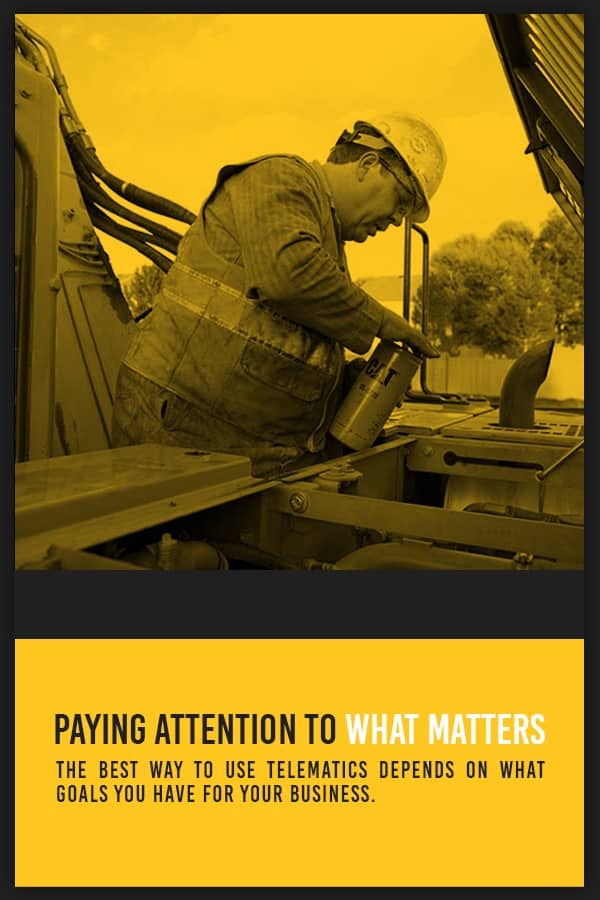 The best way to use telematics depends on what goals you have for your business. All of the goals we’ve covered in this article can help you improve your operations. What company wouldn’t want to keep workers safer or improve overall efficiency? These goals and all the others we’ve discussed are worthwhile and can help your business succeed.
The best way to use telematics depends on what goals you have for your business. All of the goals we’ve covered in this article can help you improve your operations. What company wouldn’t want to keep workers safer or improve overall efficiency? These goals and all the others we’ve discussed are worthwhile and can help your business succeed.
However, if you’re overwhelmed by the thought of tracking so many different data sets and effectively responding based on that data, start with the goal that’s currently most important to you. Where does your company currently have the most room for improvement? Target that area first then, as you become more comfortable with using telematics data, you can begin to track other categories, as well.
Though a fleet tracking management program will include many telematics data sets, you can limit your view to include only the data sets you want to see. Look for a fleet management solution that is intuitive to use and understand. It should present data in a way that makes it useful to you and easy to interpret. If you’re interested in Cat’s telematics solution, you can view demos of Product Link online so you can become familiar with this software and see just how user-friendly it is.
Partner With NMC for Cat Equipment and Services
Telematics, if used properly, can make a huge difference for your company. The strategies we’ve discussed should leave you equipped to effectively harness telematics data and improve your overall operations. NMC is committed to helping construction companies and heavy equipment handlers succeed.
For over 80 years, construction companies and anyone using heavy equipment throughout Nebraska and the surrounding areas have come to rely on NMC Cat as their trusted local Cat dealer. We offer an extensive range of services, including preventive maintenance and repairs, replacement parts, machine monitoring and fleet management. If you want to learn more about what NMC Cat can do for your construction business, contact us online or come visit us at one of our locations to speak with an experienced representative.
